The Plants of Acapulco
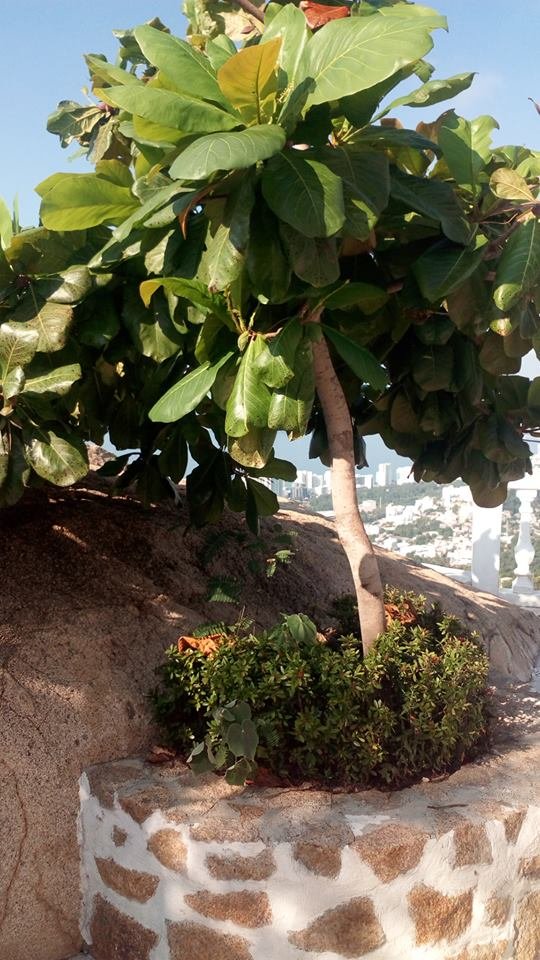
Today I was in the back of the truck driving around Acapulco, which left me sunburnt but inspired. We are reaching the end of the rainy season here, where things are at their most lush, about to start dying back due to lack of water. I'm astounded by the number of familiar things that grow here, and also by the number of unfamiliar things that grow here as well. Some of my favorite things to garden back in the states pretty much grow wild, or nearly wild here. I find tomato plants and fruit trees in unexpected places.
I've been able to identify a lot more of that jungle that I expected. What I haven't been able to identify has generally given me an itchy rash or it's covered in thorns. Something to remember with the jungle, is that everything is trying to eat everything and that includes the plants. I've watched just a few viney plants eat an entire boulder. You pull them off in a big thick matted sheet if you're like us and behind on cutting back your jungle. I've learned a lot though in my jungle adventures here in Acapulco.
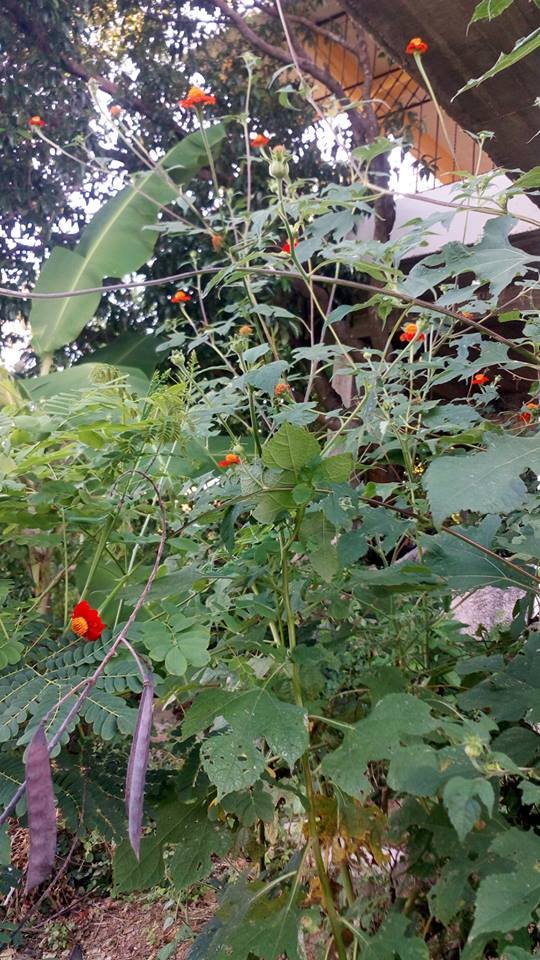
Marigolds, volunteering to be by my tomatoes. I've allowed it for now.
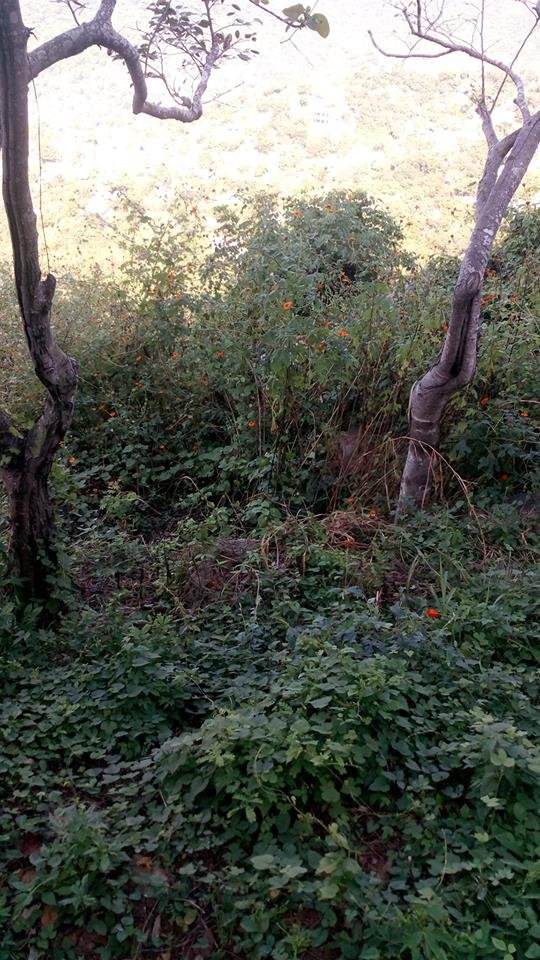
A view down our slightly chopped hill, to show the coverage of marigolds. They are the orange and red specks.
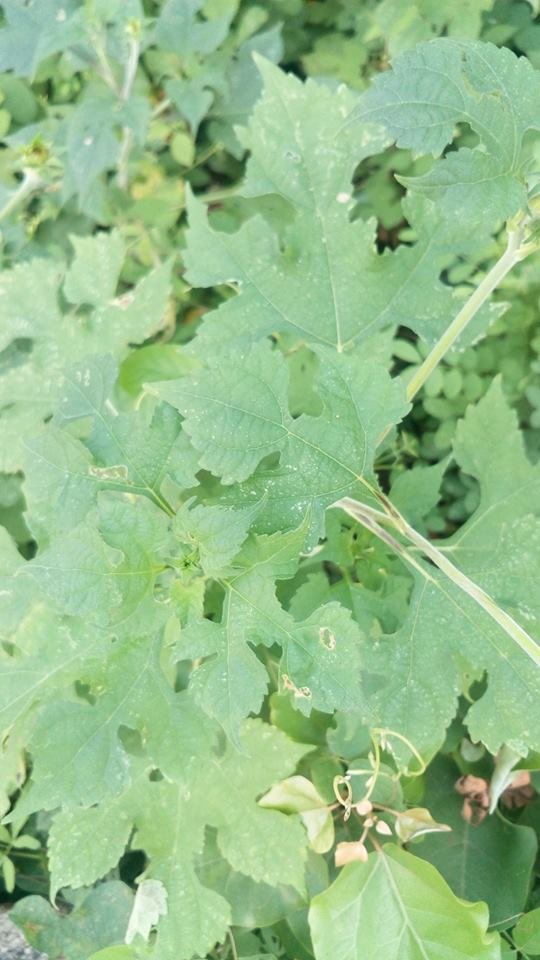
Wild marigold leaf, covered in spider mites as promised. The white specks are actually damage, where the mites pull the nutrients out of the leaf from the underside of the leaf.
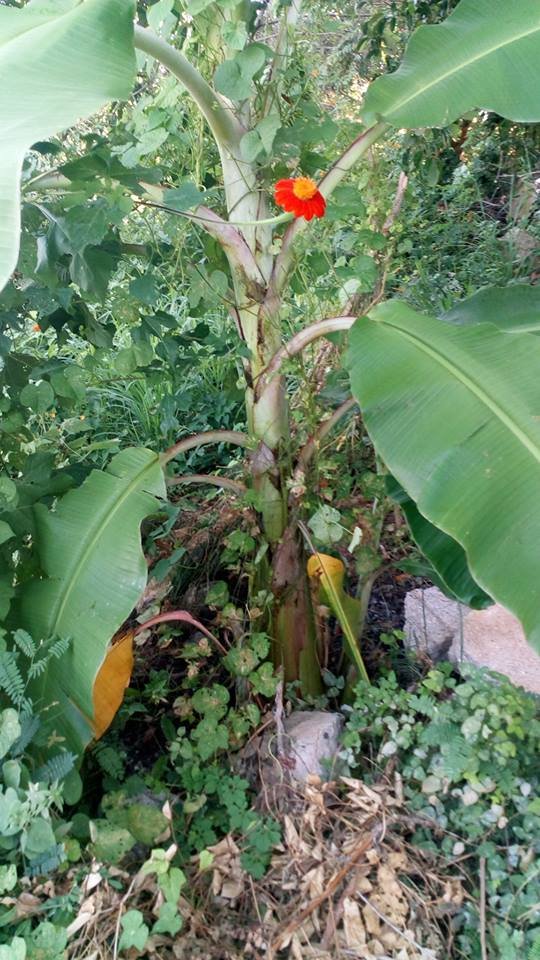
Marigold and a banana tree
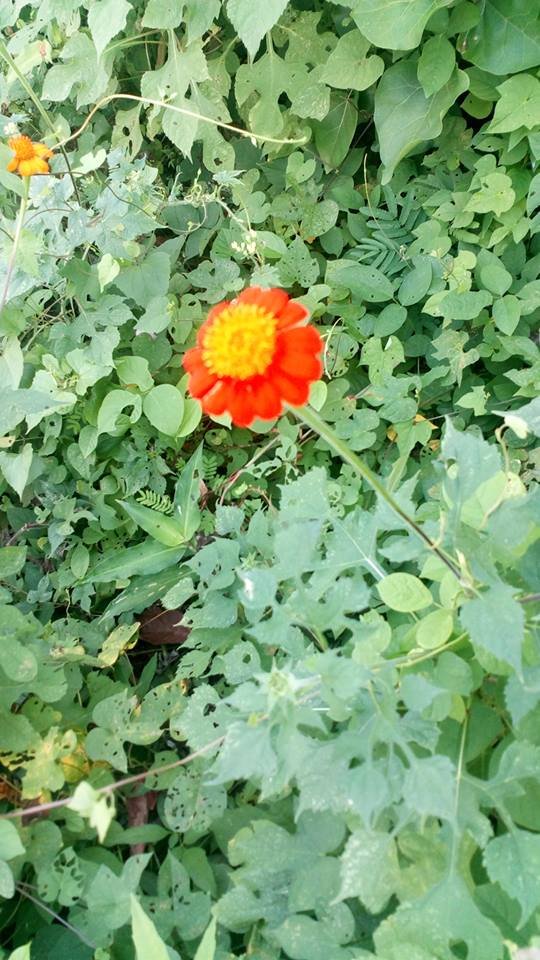
Marigold flower up close. The flowers can vary widely when cultivated, but wild marigolds seem to stick to this flower structure.
Marigolds are everywhere right now, my hillside is ABSOLUTELY covered in them. We have hot pink ones, orange ones and red ones. They're the size of small trees and they've got relatively small but bright flowers in comparison to the size of the plant. American marigolds are very different, so I was floored when I realized the tree like thing I've been cutting back all year is none other than marigolds.
These are prized by gardeners as they have several purposes as a companion plant. If you put them near tomato plants, they will keep nematodes in the soil from attacking nearby plants, as they emit a toxin of sorts to the nematode to keep them away. They're known as spider mite magnets so they've been used to divert spider mite attention off some crops onto marigolds, with mixed results. This is unreliable from my understanding. I however happen to love marigolds, so when I realized some were flowering right next to my tomatoes and that they weren't inhibiting growth or walkways, I decided to leave them for their beneficial aspects and their beauty. Recently, I've seen big fluffy marigolds like I'm used to at Walmart for sale, which has made me happy.
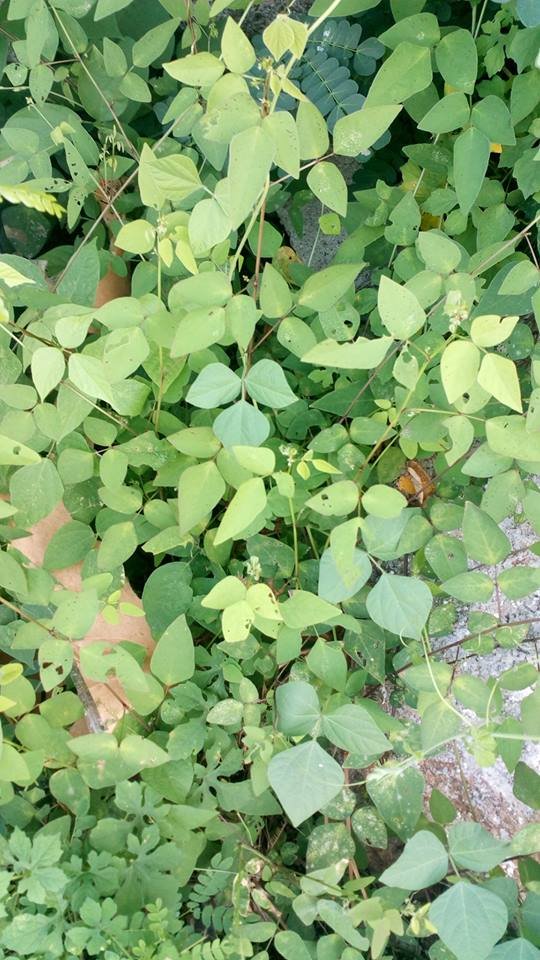
Some wild bean plants.
Beans grow like mad here, they are some of the vines taking over my garden. These are wild beans though as far as I know. I'm not sure they're edible and I'm not sure I want to chance these super vigorous beans eating my garden for possibly edible beans. I allowed a few volunteer beans to grow with some tomatoes, and neither are doing very good. I feel this is due to the invasion of morning glory, a plant known for choking other plants out, literally.
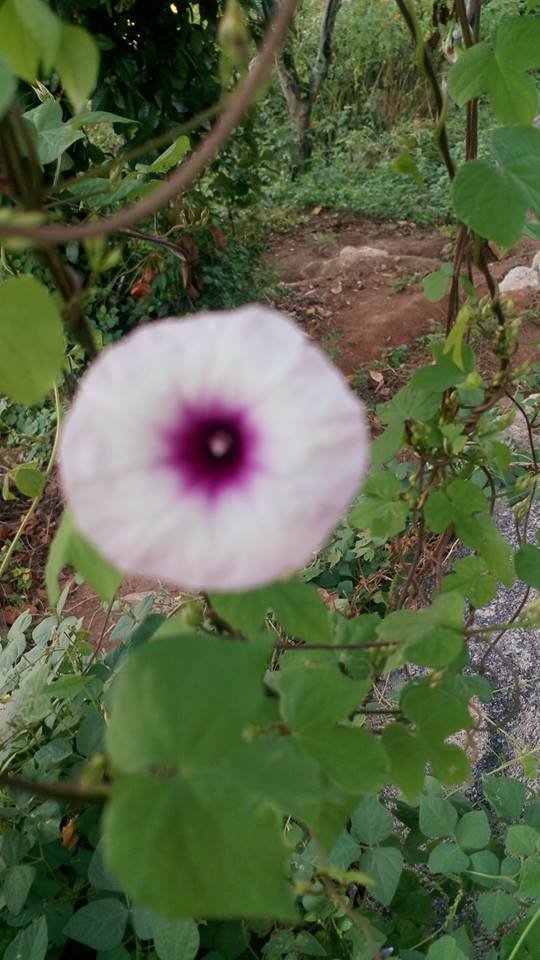
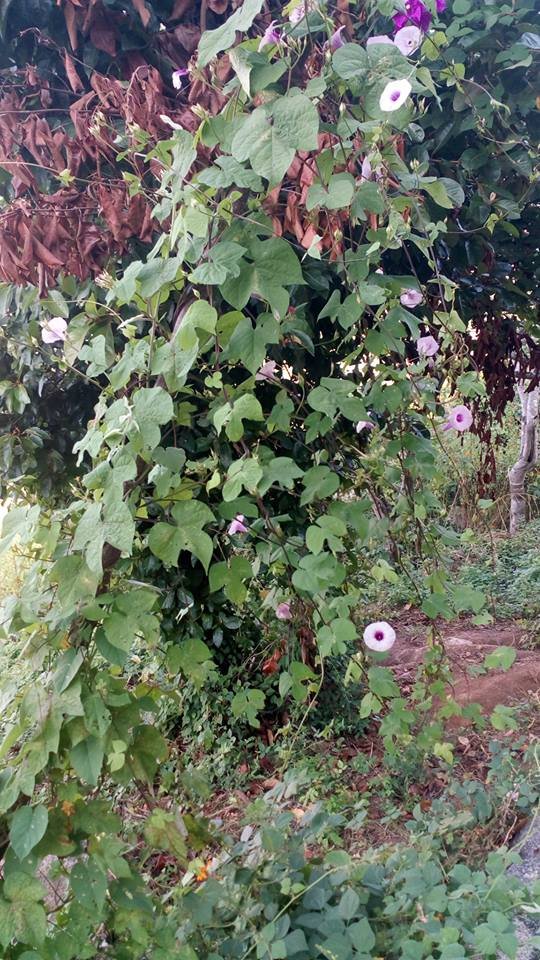
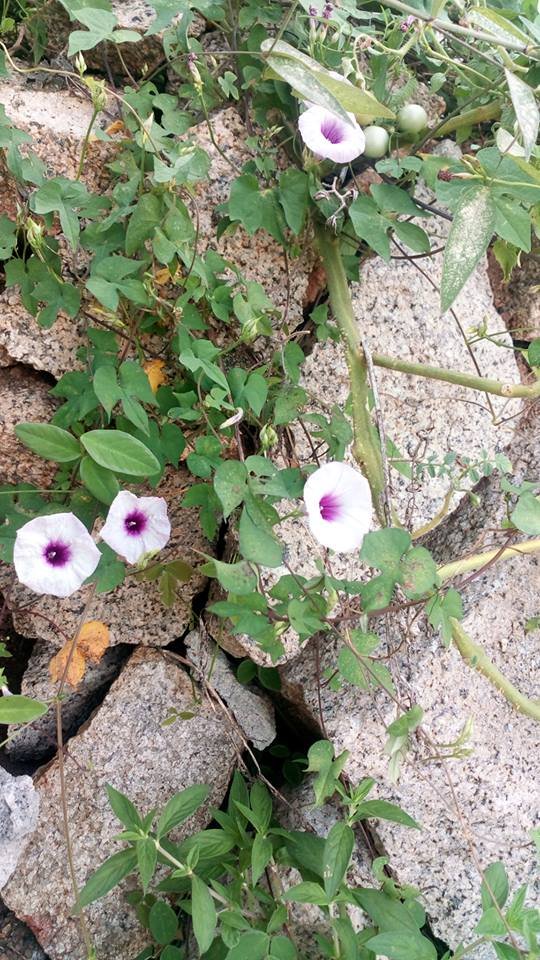
This brings us to Morning Glories, the historically psychoactive flower. The seeds are really the psychoactive part, but you do not receive seeds without flowers first. I knew moving to Mexico that I was moving to the land of morning glories, close to where they grow natively. Acapulco has not disappointed as I've seen all sorts of varieties here, some I know are psychoactive, some that are just pretty but inert for the most part. My hill is covered in these light purple ones with dark purple centers. I've done a quick google search and from what I know they aren't anything special in that regard, although they are pretty. I've recently seen the pearly gates variety, a white kind known for bearing psychoactive seeds.
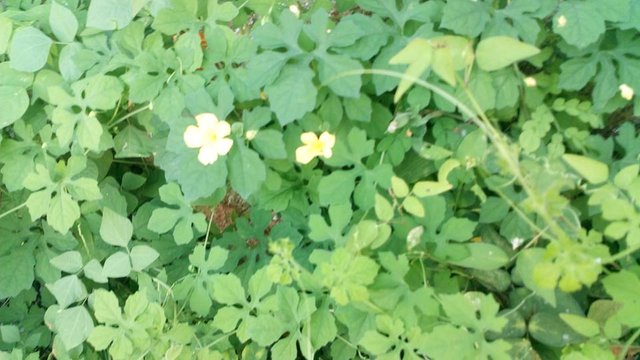
Wild Squash Plant with flowers, some beans in there too.
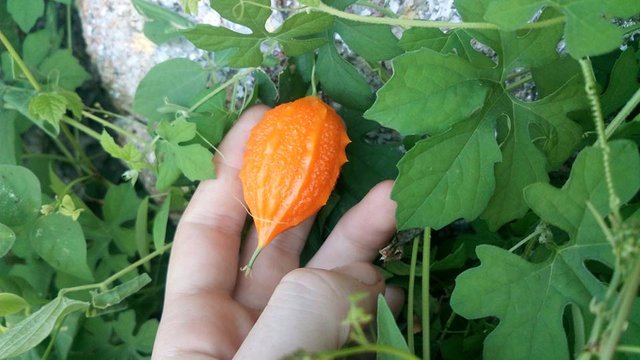
Wild Squash fruit.
Squash grow very well here, so well that there are these interesting wild squash about. They look just like really small, but strong, squash plants. The flowers are a small yellow squash flower, like you'd see on a watermelon. The fruit that came were small, orange and shaped like a spikey teardrop. They have bright red seeds and the fruits are about the size of cherry tomatoes. In general, conventional squash grow like mad. We've seen many vacant lots in the city just filled from end to end in squash plants. Recently in the grocery stores, we've seen some pretty giant and different squash, possibly from operations like these lots.
Mangoes are everywhere. I come from Cleveland, somewhat notorious for the number of Mulberry Trees planted in the area. I often refer to Mangoes as the Mulberries of Acapulco, for the trees are just as common here. The apartment building we lived in here had a mango tree that produced mangoes in the time that we lived there. I eventually picked mangoes from the window of my third floor apartment before I left. They vary greatly from big purple ones that are sickeningly sweet, to tart citrusey yellow ones that I generally prefer. Mexicans have all sorts of contraptions, both storebought and homemade that they use to harvest mangoes. The difference between Cleveland's Mulberry trees and Acapulco's Mango trees is the fact that Mexicans harvest the mangoes, where people in Cleveland generally leave mulberries to rot.
Star fruit grow well and without much influence once the trees are established here. We've had personal experience with one tree, that produced a crazy amount of fruit with no input despite it's smaller size. I had never experienced a ripe star fruit before moving here, and they're honestly a revelation. Much sweeter with more complex flavors, one of my favorite fruits that grow here for sure.
Papaya are a common sight, partially because of how fast they grow. In the right conditions papaya trees fruit the first year, so they're highly desirable for that reason. They produce pretty large fruit so that's really saying something. They start best from seeds and they hate being transplanted so this is one of the few things I will recommend you direct sow if you decide to grow it. There's one down the street that I was planning on transplanting to my garden, although I've decided against it now. I'm not a fan of papaya as far as I know, but from my understanding they vary greatly just like mangoes. Their seeds are not true to type, which means the results are not genetically identical to the parent papaya. I'm interested to explore papayas and to eventually try a good one, hopefully.
Prickly pear cactuses are everywhere, and they are an important part of Mexican culture and diet. If you look at the images on the Mexican flag, you'll notice there's a prickly pear cactus featured. The cactus is eaten as a food referred to as nopales. They just skin off the sharp parts and sell the green parts whole to be prepared however they will be by the consumer. I've not had much experience eating it, and the things I have tried with it in it have been really intense. There's also a red fruit that they make candy out of.
Agave is around as well, used in a lot of decorative ways here. It's clear people harvest the agave though, for their own purposes. Agave is obviously essential for mexican culture, as it just wouldn't be the same without Tequila, the mexican agave based booze. I personally hate the taste of even high quality tequila, but the effects are pleasant in my opinion, as far as alcohol goes any way. There's all different colors and kinds of agave available for sale, although I haven't really bought much of it.
Aloe is everywhere, in gardens and growing wild. Here due to the color of the soil, which is somewhat orange without any organic matter in it, the aloe has an orange tint to it. When I first got here, it was the middle of the dry season, so all aloe I saw was orangish in color, which threw me off. It looked like aloe in every way other than color. When I stole a small plant from a nearby lot, I planted it into regular store bought peat moss based potting soil. Within weeks the aloe was growing and green. At this point, it's got a slight yellowish color to it but there's no orange hue to speak of.
Tuna fruit is something that perplexes me at this point. Online it's described as a famine food, something people only eat when they have to. It seems to hold true as the tuna fruit trees in my neighborhood go unpicked, when even the bad mango trees get ravaged for their fruit. It's called a famine food because it is known to produce even in extreme drought, often when people are experiencing famine. I see it for sale in Walmart for like 30 pesos a kilo, making it one of the more expensive items you see in the produce section. I recently talked to a french expat(who only speaks french and spanish) and she told me they were very good fruit. I've never tried one, and considering their reputation as a famine food I'm a bit afraid to.
Nanches grow all over here, and are a delicacy in Mexican diet. They're these little yellow fruits that have a weird sickly sweet smell. I only like them overripe as when they are firm in texture they leave you with cotton mouth, every time. They have a flavor that is okay in my opinion, but isn't worth the cotton mouth. Nonetheless, I see mexicans clustered under naches trees during the right times of years, picking up the nanches to wipe them on their shirt and eat them. They're sold in the markets and they make popsicles out of them.
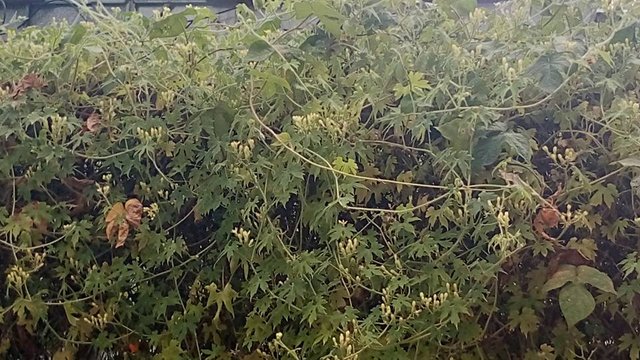
Here's a fence, utterly infested in a terrible vine that causes rashes.
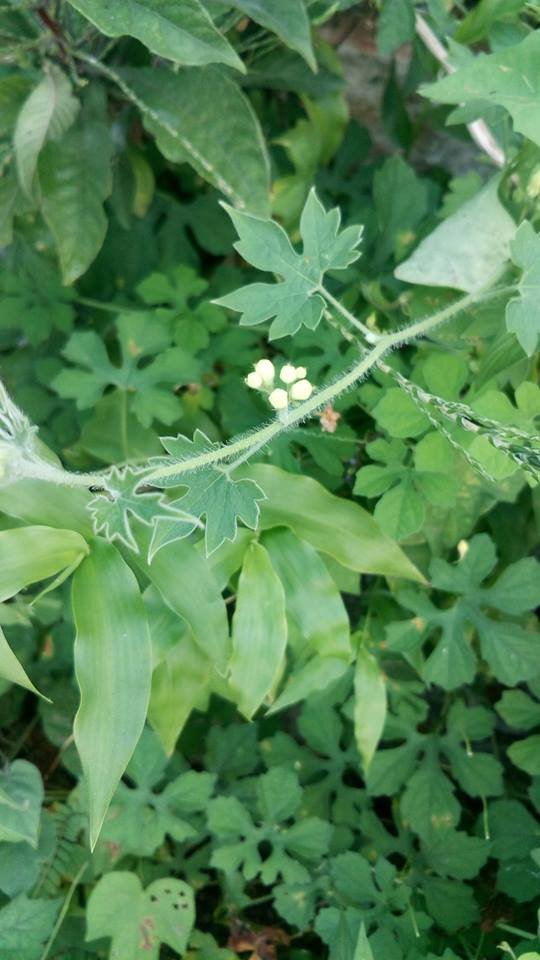
If you're in acapulco and you see this vine, avoid it.
There's this vine that I call the bastard vine, as I don't know the actual name for it. Its the type of vine that touches you and gives you an instant, nearly painful rash that can last for weeks if you exaggerate it by itching it. The rash occures when one of it's trichomes catches your skin, probably releasing some sort of irritant into your now broken skin. It penetrated my garden, and no doubt covers my hillside as ground cover. It is also known for swallowing trees, especially with the help of morning glory vines.
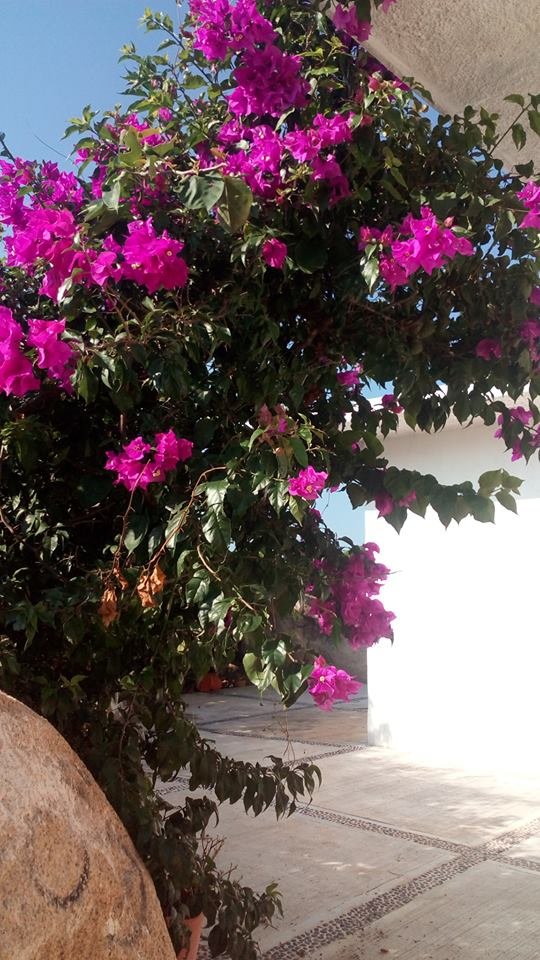
Vines outside my house, used to bridge over from the garden and create shade.
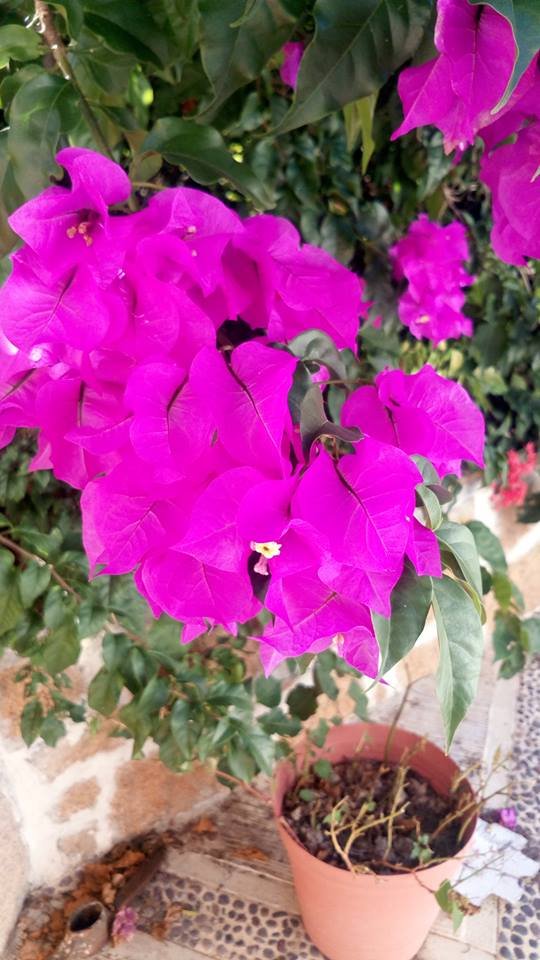
Bougainvillea is everywhere, in all colors. One of the things that made me fall in love with my house was we found it at a time when our vines were flowering a lot, which made the garden extremely lush with color. It was big clashing splotches of red, pink, purple, white and orange, as the owner put many different colors in a small area. Now I've noticed our pinkish purple ones are flowering again, as are many others of the same color in the city. I love these vines, despite the fact that they are extremely thorny, sporting 1 inch thorns all over the vines.
There's honestly so much that grows here, I really couldn't cover it in just one article. I've been floored at the diversity you see here in terms of plant life. I've learned a lot about plants, as you learn about plants and how they cope with their environment. While I recognized many of the plants here, they are all distinctly different in certain ways that makes them hardier in terms of growing. These features turn a plant that was a dainty somewhat weak plant that produces good food into a plant that can withstand anything and is good at choking others out. Wild Squash vines here are very firm and tough, with small fruit resistant to mold. Their cultivated counterparts are big, hollow delicate stems, that break even in strong winds. Cultivated Marigolds are like small bushes, with small foliage wheras their wild counterparts are nearly tree like in nature. The size they grew to in just one season is crazy. 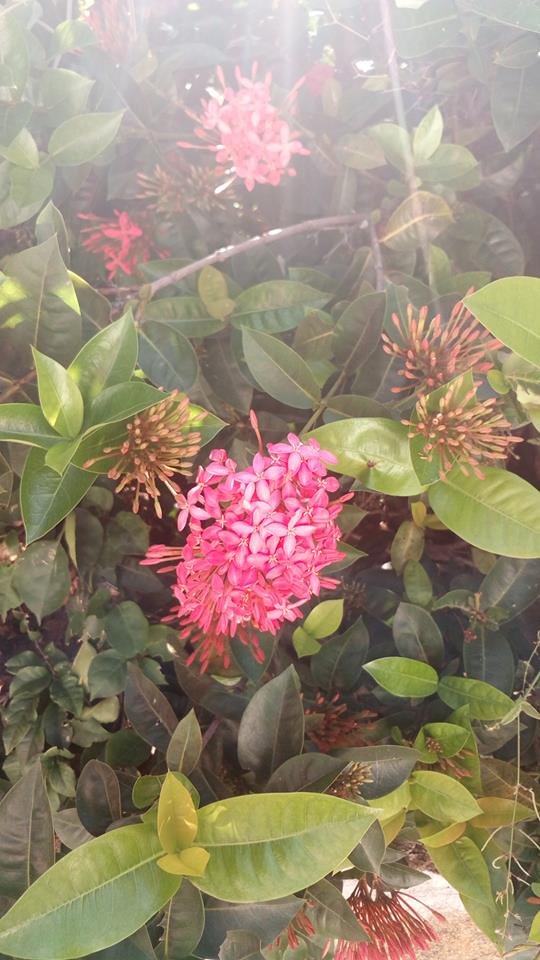
This is a common flowering bush here, that I do not know the name to.
I get to observe a lot of this up close as I live in the jungle, on land that was very recently national forest land. With some government corruption and american money, my little barrio was born and expanded, to the point where it is now. At this point, properties are being built up on a daily basis, but this hill was empty not that long ago. We are just now getting sewer to our neighborhood, the barrio is only recently had power. There is no public water up here, everything is brought up by giant water trucks that cost about 25 dollars USD for 10,000 liters of water, not drinking safe but safe for washing. It's because of the newness of my barrio that I experience the amount of wildlife that I do, and I am thankful for it. As I write, butterflies and dragonflies swarm and float around my house. You can't get this sort of experience anywhere in Acapulco that I know of.
This is a really nice post!